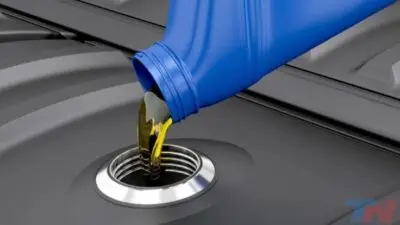Leather car seats add a touch of luxury to any vehicle, but they need proper care to stay beautiful for years. Regular maintenance not only preserves their appearance but also extends their lifespan. Keeping leather seats clean by removing dirt and debris regularly, protecting them from harsh sunlight, and applying appropriate conditioning products are the three essential practices for maintaining their quality.

Many car owners don’t realize that leather seats require different care than fabric upholstery. Leather is a natural material that can dry out, crack, and fade over time if neglected. The good news is that caring for leather seats doesn’t have to be complicated or time-consuming. With simple, consistent care routines, you can enjoy the comfort and elegance of leather seats for as long as you own your vehicle.
Key Takeaways
- Regular cleaning with gentle cleansers prevents dirt buildup that can damage leather over time.
- Blocking sunlight with window tints or shades prevents fading and cracking of leather surfaces.
- Applying quality leather conditioner every few months maintains moisture and preserves the material’s natural suppleness.
Understanding Leather Car Seats

Leather car seats offer both luxury and durability, but knowing what you’re dealing with helps you maintain them properly. Different leather types require specific care approaches to prevent damage and extend their lifespan.
Types of Automotive Leather
Automotive leather comes in several varieties, each with different characteristics. Full-grain leather is the highest quality, featuring natural markings and excellent durability. It ages beautifully but requires regular maintenance.
Top-grain leather is slightly more processed, with imperfections removed. It’s more uniform in appearance and slightly more resistant to stains than full-grain.
Corrected-grain leather has been sanded to remove imperfections and embossed with a leather-like pattern. This type is more affordable but less durable long-term.
Nappa leather is soft, supple, and commonly used in luxury vehicles. It provides excellent comfort but can be more susceptible to damage without proper care.
Some manufacturers use semi-aniline leather with a light protective coating that helps resist stains while maintaining a natural feel.
Leather vs. Imitation Leather
Many vehicles advertise “leather interiors” that aren’t genuine leather. Vinyl (also called leatherette) is common in entry-level models and mimics leather appearance at a lower cost. It’s easier to clean but doesn’t breathe like real leather.
Bonded leather contains leather scraps mixed with synthetic materials. While affordable, it typically deteriorates faster than genuine leather.
Polyurethane (PU) leather is entirely synthetic but increasingly realistic. It resists water damage better than genuine leather but lacks the same breathability and longevity.
Real leather develops a distinct patina over time that synthetic materials cannot replicate. It also has a specific smell and texture that’s difficult to fake. Genuine leather breathes, keeping you cooler in summer and warmer in winter.
Common Leather Upholstery Concerns
Leather upholstery faces several challenges that proper care can prevent. Cracking occurs when leather dries out, often from sun exposure or lack of conditioning. Regular application of quality leather conditioner helps maintain moisture balance.
Fading happens gradually with UV exposure. Window tinting and parking in shaded areas significantly reduce this risk. Leather-specific UV protectants provide additional defense.
Staining is particularly troublesome on lighter leathers. Promptly cleaning spills prevents permanent damage. Always test cleaners in an inconspicuous spot first.
Wear patterns develop where bodies repeatedly contact the seats. Rotating where you sit and using gentle cleaning techniques helps minimize this issue.
Body oils and perspiration can damage leather over time. Regular wiping with a damp microfiber towel removes these substances before they penetrate.
Essential Tools and Products for Leather Care

Maintaining leather car seats requires specific products designed to clean, protect, and extend the life of your leather. The right tools can make a significant difference in preserving your seats’ appearance and preventing premature wear.
Choosing the Right Leather Cleaner
A quality leather cleaner is the foundation of proper seat maintenance. Weiman Leather Cleaner stands out as a top performer according to recent tests, offering excellent cleaning capabilities while maintaining the leather’s feel after application.
When selecting a cleaner, look for products specifically formulated for automotive leather. These cleaners are designed to:
- Remove dirt and oils without stripping natural leather oils
- Preserve the material’s texture and suppleness
- Be pH-balanced to prevent damage
Avoid household cleaners that contain harsh chemicals, as these can dry out and damage leather over time. Many detailers recommend brands like Meguiar’s and Lexol for their gentle yet effective formulations.
A soft-bristle brush can help work the cleaner into the leather grain without scratching the surface. This is especially useful for textured leather with more pronounced grain patterns.
Selecting an Effective Leather Conditioner
After cleaning, applying a quality conditioner is essential to replace natural oils and maintain flexibility. Leather conditioners create a protective barrier against UV damage and prevent cracking and fading.
Key features to look for in a leather conditioner include:
- Non-greasy formula that absorbs properly
- UV protection components
- Natural oils and moisturizers
- No artificial colors that might transfer to clothing
Application frequency depends on your climate and vehicle usage. In hot, sunny regions, conditioning every 1-2 months is recommended, while in milder climates, quarterly applications may suffice.
For optimal results, apply conditioner with a clean microfiber cloth using gentle circular motions. Allow the product to absorb completely before sitting on the seats.
Benefits of a Leather Care Kit
Purchasing a comprehensive leather care kit often provides better value and ensures product compatibility. These kits typically include cleaners, conditioners, and application tools designed to work together.
Advantages of leather care kits:
- Matched products that complement each other
- Cost savings compared to buying items separately
- Appropriate application tools included
- Clear instructions for proper use
Most premium kits from respected car care product manufacturers include microfiber towels, applicator pads, and sometimes brushes specifically designed for leather care.
Regular maintenance with these kits significantly extends leather lifespan. Users report that high-quality kits from brands like Lexol and Meguiar’s can restore even neglected leather to an impressive condition with consistent use.
Routine Cleaning Practices

Regular leather seat maintenance prevents dirt buildup and extends the life of your vehicle’s interior. Proper cleaning techniques and the right products make a significant difference in preserving the appearance and texture of leather seats.
Daily and Weekly Cleaning Tips
Quick daily maintenance prevents dirt from becoming embedded in your leather seats. After each drive, remove visible debris by gently brushing off crumbs and dust with your hand or a soft brush.
Keep leather wipes in your car for quick cleanup of spills before they set in. Clean up coffee, food, or other spills immediately to prevent staining.
Weekly cleaning should be more thorough. Vacuum your seats with a soft brush attachment to remove dust from seams and crevices where dirt collects. Pay special attention to:
- Seat edges and piping
- Areas between seat cushions
- Headrests and armrests
- Door panel leather
Experts recommend cleaning leather seats every three months for basic maintenance, but increase frequency if your vehicle sees heavy use from multiple passengers or pets.
Using a Microfiber Cloth Properly
A high-quality microfiber cloth is essential for leather care. These cloths trap dirt particles that could scratch your leather during cleaning.
Proper technique matters:
- Use light pressure in small circular motions
- Work section by section across the seat
- Flip or change cloths when they become soiled
- Never scrub aggressively on leather surfaces
For stubborn dirt, slightly dampen the cloth with water or appropriate leather cleaner. Wiping seats with a lightly damp rag regularly helps maintain cleanliness without harsh chemicals.
After cleaning with a damp cloth, use a dry microfiber cloth to remove excess moisture. Leaving water on leather can lead to water spots or premature aging of the material.
Safe Cleaning Agents for Leather
Not all cleaning products are safe for leather car seats. Choose products specifically formulated for automotive leather to avoid damage.
Recommended cleaning agents:
- pH-balanced leather cleaners
- Manufacturer-approved cleaning products
- Mild soap solutions (very diluted)
Avoid household cleaners containing:
- Alcohol
- Bleach
- Ammonia
- Petroleum distillates
For a simple DIY solution, mix a few drops of mild soap with warm water. Test any cleaning solution in an inconspicuous area first to ensure it doesn’t discolor or damage your leather.
After cleaning, consider applying a leather conditioner every 1-3 months to keep the leather supple and prevent cracking. Select a conditioner that matches your leather type for best results.
Conditioning Leather Car Seats

Leather conditioning is an essential step that protects your car seats from drying, cracking, and premature aging. Regular application of quality conditioners keeps leather supple and maintains its natural beauty.
How to Apply Leather Conditioner
Start by thoroughly cleaning your leather seats and allowing them to dry completely. Select a high-quality leather conditioner specifically designed for automotive use.
Apply a small amount of conditioner to a clean, soft microfiber cloth – never directly onto the leather. Using gentle circular motions, work the conditioner into the leather surface. Be sure to cover all areas including seams and hard-to-reach spots.
Allow the conditioner to absorb for the time recommended on the product label, typically 10-30 minutes. Then, use a fresh microfiber cloth to buff away any excess product. This prevents a greasy feeling and ensures proper absorption.
For best results, condition seats when the temperature is moderate – extreme heat or cold can affect how the conditioner performs.
Conditioning Frequency Guidelines
The ideal conditioning schedule depends on several factors:
- Daily use vehicles: Condition every 2-3 months
- Vehicles with regular sun exposure: Condition every 1-2 months
- Garage-kept vehicles with limited use: Condition every 3-4 months
Climate also plays an important role. In dry, hot regions, leather seats require more frequent conditioning to prevent drying and cracking. In humid environments, conditioning can be less frequent but still necessary.
Watch for warning signs that your leather needs attention: a dull appearance, stiffness when touched, or visible dryness. These indicate it’s time to condition regardless of your regular schedule.
Benefits of Conditioning
Regular leather conditioning provides multiple advantages for your vehicle’s interior. First, it helps maintain the supple, like-new finish that makes leather seats desirable. This preserves both comfort and appearance.
Conditioning creates a protective barrier against UV damage, which can fade and crack leather over time. It also shields against spills by improving the leather’s natural resistance to moisture absorption.
Well-maintained leather seats significantly improve resale value. Potential buyers notice the difference between properly conditioned leather and neglected seats immediately.
From a practical standpoint, conditioned leather is easier to clean, as dirt and debris are less likely to become embedded in the material. Regular conditioning also prevents small cracks from developing into larger, irreparable damage.
Preventing Damage and Stains

Leather car seats require proactive care to maintain their appearance and extend their lifespan. The right preventative measures can protect against common threats like color transfer, everyday friction, and harmful UV rays.
Protecting Against Dye Transfer
Dye transfer from dark clothing, especially new jeans, poses a significant risk to light-colored leather upholstery. To prevent this common issue, consider using leather sealant products that create a protective barrier between your clothing and the seats.
Seat covers offer another effective solution when driving in dark clothing. These removable barriers are particularly valuable during hot weather when dye transfer occurs more readily due to perspiration.
For existing seats, applying a quality leather protectant every 1-3 months creates an invisible shield against dye migration. Look for products specifically formulated for automotive leather rather than household leather conditioners.
Quick tip: Ask passengers in new dark jeans to sit on a towel to prevent unexpected dye transfer incidents.
Minimizing Wear from Daily Use
Daily entry and exit creates friction that gradually wears down leather surfaces. Drivers should avoid sliding across seats when entering or exiting the vehicle. Instead, they should fully stand before sitting down to minimize abrasion.
Sharp objects like keys, tools, and hardware should never be kept in back pockets when sitting on leather seats. Even small metal items can create scratches or punctures in the material.
Regular cleaning with appropriate products helps prevent dirt particles from grinding into the leather surface. A gentle wipe-down with a damp microfiber cloth once weekly removes abrasive debris before it can cause damage.
For high-traffic seats, consider applying a leather conditioner quarterly to maintain suppleness. This prevents the leather from becoming brittle and developing cracks from repeated use.
Shielding from Sun and Heat
UV radiation and excessive heat cause leather to fade, dry out, and eventually crack. Whenever possible, park in shaded areas or enclosed garages to minimize direct sunlight exposure.
Window tinting with UV protection significantly reduces solar radiation reaching the interior. Even a light tint can block up to 99% of harmful UV rays while remaining legal in most jurisdictions.
Leather protectants with UV inhibitors provide an essential defense layer against sun damage. These products should be applied every 1-2 months for optimal protection.
Sun protection checklist:
- Use windshield sunshades when parking outdoors
- Apply UV-protective leather conditioner regularly
- Consider ceramic window tinting for maximum heat rejection
- Install seat covers during extended outdoor parking periods
Deep Cleaning and Restoration

Even with regular maintenance, leather seats eventually need deep cleaning to remove stubborn dirt, oils, and stains. A thorough restoration process can revitalize tired leather and extend its lifespan significantly.
When to Deep Clean Your Leather Seats
Deep cleaning should be performed when regular wipes no longer remove visible dirt or when leather develops a dull appearance. If your seats show signs of cracking, discoloration, or feel stiff to the touch, it’s time for a thorough treatment.
Most automotive experts recommend deep cleaning leather seats every 3-6 months, depending on usage. High-traffic vehicles or cars exposed to harsh environments may require more frequent attention.
Before starting, always check for perforations or holes in the leather. Excess moisture can damage the padding underneath if it seeps through these openings.
A good indicator for deep cleaning is when water beading stops, suggesting the protective coating has worn away.
Step-by-Step Leather Restoration
Begin by removing large debris and dirt with a vacuum. This prevents scratching the leather during the cleaning process.
Apply a quality leather cleaner to a small area first as a spot test. This ensures the product won’t damage or discolor your specific leather type.
For thorough cleaning, work the leather cleaner into the surface using a soft-bristled detailing brush. Circular motions help create foam that lifts embedded dirt. Allow the product to dwell according to manufacturer instructions.
Wipe away residue with a clean microfiber towel. For particularly soiled seats, you might need to repeat this process.
After cleaning, apply a leather conditioner to restore moisture and flexibility. This prevents cracking and drying. Allow the conditioner to absorb fully before using the vehicle.
For severely neglected leather, professional-grade leather care kits with multiple restoration products may be necessary to achieve optimal results.
Additional Car Care Tips for Leather Interior

Proper leather care extends beyond just cleaning and conditioning. Strategic maintenance and proper storage of leather care products create a comprehensive approach to preserving your vehicle’s interior.
Integrating Leather Care With Overall Car Maintenance
Regular leather care should be part of your complete car maintenance schedule. Add leather cleaning to your monthly car care routine, treating it with the same importance as washing the exterior.
When washing your car, tackle the leather interior on the same day to prevent transferring dirt from your hands to clean seats. Vacuum the seats first to remove debris before applying any leather products.
Park strategically to minimize sun exposure. Use windshield sunshades and consider window tinting to reduce UV damage that can fade and crack leather surfaces.
Monitor humidity levels in your garage. Excessive dryness can cause leather to crack, while too much moisture encourages mold growth. A dehumidifier or humidifier may be necessary depending on your climate.
Storing and Transporting Cleaning Products
Keep leather cleaning products in a cool, dry place away from direct sunlight. Extreme temperatures can degrade the effectiveness of leather cleaners and conditioners.
Create a dedicated leather care kit in a small container that includes:
- Your preferred leather cleaner
- Leather conditioner
- Microfiber cloths (separate ones for cleaning and conditioning)
- Soft-bristled brush for seams and perforations
- Small spray bottle with distilled water
Store products upright with caps tightly sealed to prevent leaks. When traveling with leather care products, place bottles in sealed plastic bags to contain potential spills.
Check product expiration dates regularly. Most leather cleaners remain effective for 1-2 years after opening, but efficacy diminishes over time.
Frequently Asked Questions

Leather car seats require specific care routines and products to maintain their appearance and durability. Proper maintenance prevents damage while extending the life of your investment.
What are the best products to use for cleaning leather car seats?
The most effective products for leather seats are pH-balanced cleaners specifically designed for automotive leather. Gentle leather cleaners paired with soft-bristle brushes and microfiber cloths provide optimal results.
Avoid all-purpose cleaners as they can damage leather over time. High-quality leather conditioners should follow cleaning to restore moisture and maintain suppleness.
Many



